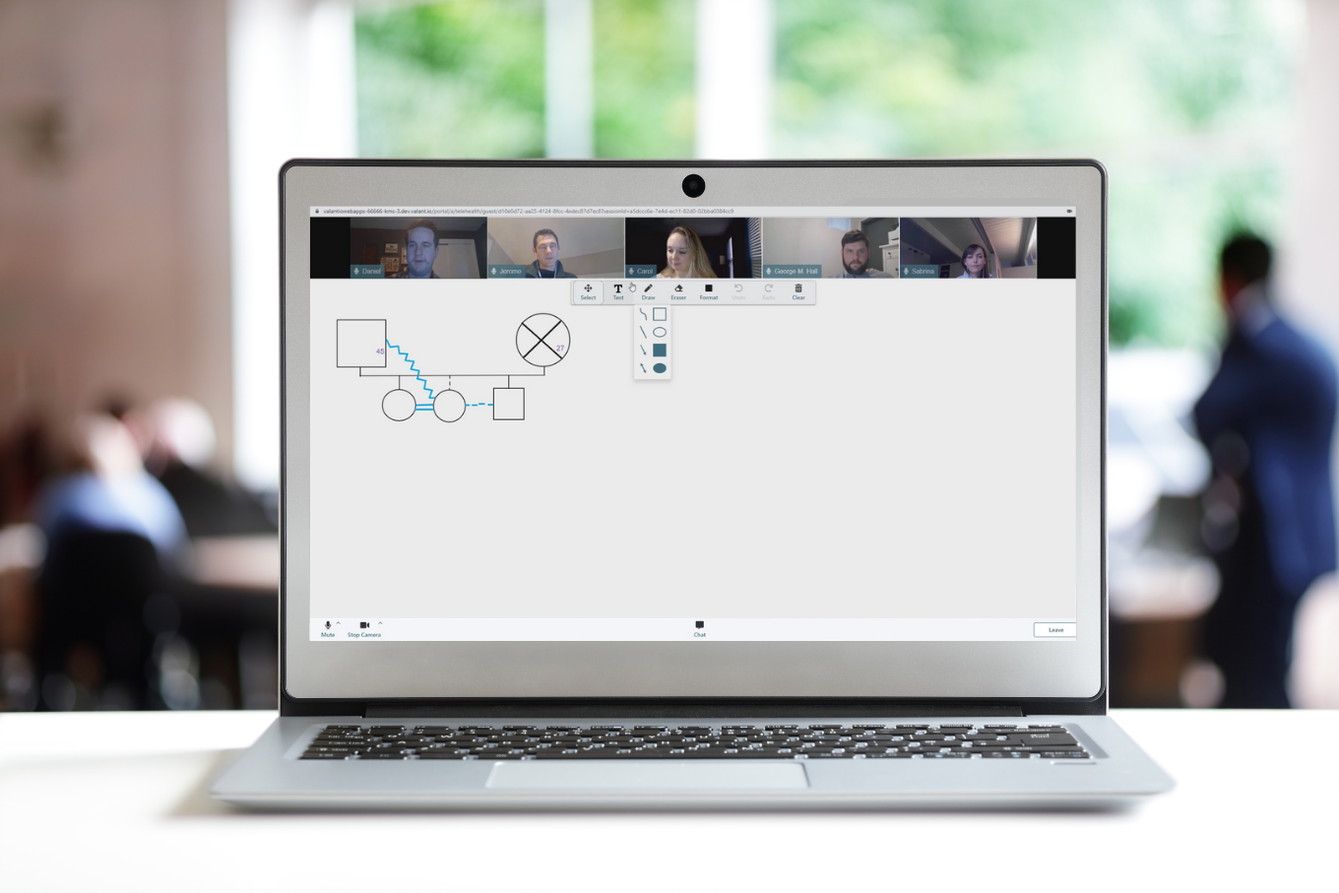Whiteboarding is a powerful tool to take traditionally in-person therapy activities to the digital telehealth space. With 41 percent of behavioral health appointments conducted online, therapists and psychiatrists can no longer rely on pen-and-paper or other physical materials for things like visualization exercises and play therapy. Whiteboarding can replicate many of those activities and foster an interactive dynamic between provider and patient.
The whiteboard feature is a blank digital canvas that provider and patient can write or draw on using built-in text box and drawing tools. Popularized by video calling software like Zoom, it is fast becoming a staple in online behavioral health treatment.
How could whiteboarding benefit your practice? Here are examples of the many ways you can use whiteboarding in teletherapy and telepsychiatry appointments.
Mind mapping
The mind mapping technique allows patients to put many disparate thoughts, feelings, and emotions “on paper” in order to see the connections between them and gain a more holistic overview of their lives. The whiteboard is a perfect environment for building these maps.
The mind map begins with a main word or idea written in the middle of the screen. The patient draws lines outward from the center and logs emotions and thoughts related to that main idea. Similar to a brainstorming session, a web of interrelated ideas begins to form, usually in no particular order. This intentional lack of organization allows a patient’s thoughts to flow freely and yield new insights.
Lighthouse exercise
This exercise relies entirely on drawing, but artistic talent is not required to reap the benefits. Participants first visualize their emotional distress as a stormy sea, and themselves lost in a rowboat in the storm. Next, they’re asked to visualize a lighthouse guiding them to safety.
Patients draw this metaphorical lighthouse and label it with all the things that help them maintain their bearings in difficult times, such as friends, family, belief, or community. Finally, patients draw themselves into the picture somewhere in relation to the lighthouse, being guided to safety.
Relationship diagrams
Providers who treat couples and families often use diagrams to help patients understand their relational dynamics. These dynamics can be hard to see from inside the relationship, and mapping them helps couples identify the behaviors and attitudes that keep them stuck in conflict. For example:
The infinity symbol exercise helps clients identify their emotional triggers and recurring behaviors. This helps them process the emotions surrounding these issues.
The butterfly formation is similar to the infinity symbol, but it adds early life experiences and core beliefs to the diagram. This helps patients dig deeper into the often unacknowledged thoughts and fears that motivate them.
Children/Play therapy
Play therapy is especially difficult in a telehealth setting, but the whiteboard feature opens up a world of possibilities that would be out of reach through a simple phone call or video chat. Therapists utilize the whiteboard for simple games such as Tic Tac Toe or picture guessing to help put children at ease, or for therapeutic drawing activities such as patient self-portraits, relationship diagrams, and speed drawing.
Allowing free, undirected drawing can also offer a window into a young patient’s thoughts, especially children who don’t yet possess the language for complex emotions.
The “Me Tree” is a popular activity for treating children that fits perfectly into the whiteboard environment. The child draws a tree to represent their life, and labels its various parts to identify things about themselves. For example, the roots represent forces in the child’s life that shape them and keep them grounded. The trunk represents a child’s strength, and branches represent life decisions that may take them down different paths.
Check out more visualization exercises for children here.
Telehealth Whiteboarding Icebreakers
Commonly used in a group therapy, icebreakers encourage patients to relax and open up for discussion. Many icebreakers require participants to be in the same physical space, so the whiteboard feature can expand icebreaker options for therapists who are limited to telehealth group therapy.
Providers will use the whiteboard to write out prompts for classic icebreaker games like Two Truths and a Lie, or use it for creative collaboration between group members. Each participant draws one small part of a bigger picture on the whiteboard. Or, the group collaboratively writes a story by having each participant contribute one sentence. Even activities that typically require crafting supplies can be adapted to drawing format, such as having participants draw the metaphorical “masks” they hide behind to manage problems.”
Integration with your EHR
As with most software features, your whiteboard environment will be a better experience for patients and therapists if it is integrated into your telehealth and your EHR, as opposed to a separate application.
A clunky feature that doesn’t play nice with your telehealth software and your EHR can be more distraction than help during therapy, and may bring additional costs, not to mention the time your staff will spend integrating and troubleshooting the program. On the other hand, asking clients to create an account and sign in to a service separate from your telehealth solution introduces extra logistical barriers to accessing care.
In addition, you must make sure your whiteboard feature is HIPAA compliant. Personal details of client treatment may be written into this space, so any whiteboard feature you use must be vetted for security as carefully as your EHR.
A whiteboard application built directly into a natively-embedded telehealth solution within your EHR eliminates these problems. That’s why Valant software now offers a whiteboard feature. Host telehealth meetings, grant access to the whiteboard environment, and collaborate with your patients in real time. No hassles and no extra logins.
Talk to a Valant representative about adding telehealth to your Valant account or switching from another EHR, and find out what Valant can do for your practice.




